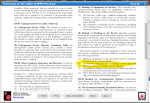yesterlectric
Senior Member
- Location
- Texas
- Occupation
- Electrician
It’s been asked here but has never been clarified. Even one of the people who’s on Mike’s DVD team suggests that when applying 250.92, that Myers hubs (trade name most of use for these conduit hubs that have a UL listing) don’t satisfy the requirement for listed hubs and thus you still need either need a bonding locknut or grounding bushing. It seems the thinking is only the hubs that bolt onto enclosures suffice. However has anyone ever found any clear evidence of this besides the opinion of some in the industry? UL white book doesn’t seem to suggest this. If the NEC truly was meaning to say this then they probably should’ve written it differently. They probably should’ve said “enclosures with integral hubs” instead of if you use listed hubs.

